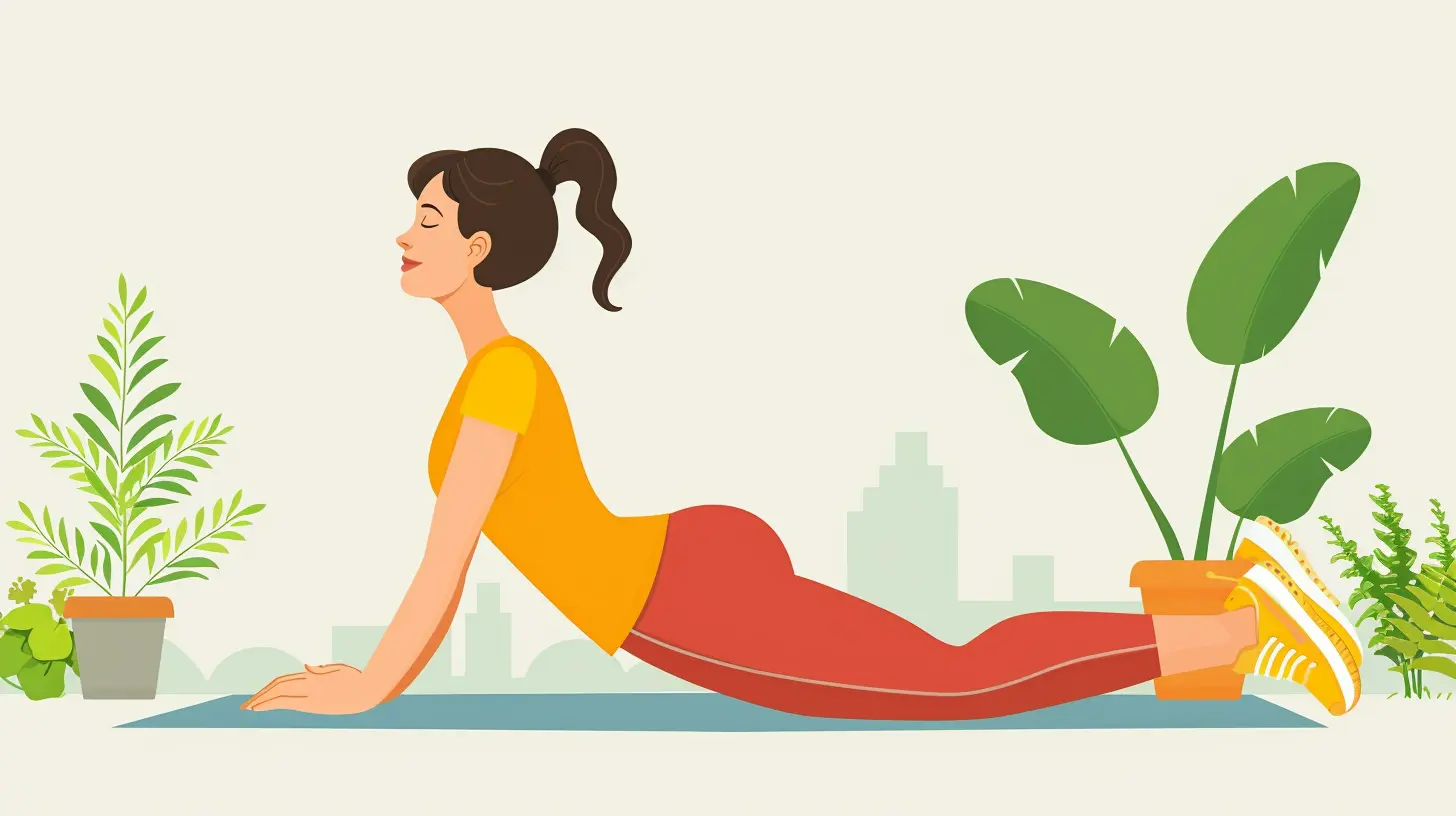Post-Workout Stretching: How to Cool Down Properly
27 June 2025
We’ve all been there—wrapping up an intense workout, dripping with sweat, heart still racing, and the only thing on your mind is hitting the shower or grabbing your post-workout smoothie. But hold up. Before you rush off, there’s one crucial thing you shouldn’t skip: post-workout stretching.
Stretching after a workout might not feel as exciting as hitting a new PR or crushing a cardio session, but trust me—this is where the real magic happens. It's like giving your muscles a high-five and telling your body, "Good job, now let’s chill."
So, let’s break it all down in a way that makes sense and helps you truly make the most of your fitness journey.
Why Is Stretching After a Workout So Important?
Think of your body like an engine. After a long drive (your workout), you can’t just turn it off instantly—you need to let it idle and cool down first. That’s what stretching does for your body. It eases the transition from high intensity to a state of rest.Here’s why post-workout stretching is a total game-changer:
- Reduces Muscle Soreness: Ever wake up the day after leg day and question all your life choices? Stretching helps reduce that dreaded DOMS (Delayed Onset Muscle Soreness).
- Improves Flexibility: Regular stretching increases your range of motion, which can boost your future performance and make everyday movements easier.
- Enhances Circulation: Stretching helps pump blood back to your heart, flushing out toxins and delivering oxygen-rich blood to your muscles.
- Promotes Relaxation: Mentally and physically, stretching helps ease you back into a calm state. It’s like yoga’s little cousin.
Stretching vs. Cooling Down: Aren’t They the Same?
Good question! They’re actually a tag team, but not identical.- Cool-down: This is the 5–10 minutes of light activity (like walking or slow cycling) that brings your heart rate down gradually.
- Stretching: This follows your cool-down and targets specific muscles that were worked, helping them lengthen and relax.
Skipping either is like baking cookies and forgetting the icing. Still good—but not nearly as satisfying.
Static vs. Dynamic Stretching: Which Should You Choose?
Another common mix-up! Let me explain it simply:- Dynamic Stretching: These are movement-based stretches and are best done before your workout to warm up your muscles.
- Static Stretching: These involve holding a stretch for 20–60 seconds and are perfect for after your workout when your muscles are already warm and pliable.
Since we’re talking about post-workout stretching, static stretches are the real MVP here.
The Best Post-Workout Stretches (Target Each Major Muscle Group)
Ready to feel like a superhero with spaghetti limbs? Here are some effective stretches broken down by muscle groups. Do each for at least 30 seconds per side. Remember to breathe deeply!1. Hamstring Stretch
Your hamstrings do a lot of heavy lifting, especially during running, squats, or cycling.- How to do it: Sit on the ground, legs extended straight out. Reach toward your toes while keeping your back straight.
- Feeling it: Gentle pull along the back of your thighs? You’re doing it right.
2. Quadriceps Stretch
Tight quads can throw your posture off and cause knee and hip discomfort.- How to do it: Stand tall. Grab your right ankle behind you with your right hand. Keep your knees close and pull gently.
- Pro tip: Hold onto a wall or chair for balance.
3. Calf Stretch
Often neglected but super important—your calves support your every step.- How to do it: Stand facing a wall. Step one foot back and press your heel into the ground while bending your front knee.
4. Glute Stretch (Figure-Four Stretch)
Perfect for relieving tight hips and lower back tension.- How to do it: Lie on your back, cross one ankle over the opposite knee, and pull the thigh toward your chest. Feel that deep stretch in your bum.
5. Hip Flexor Stretch
Especially helpful for folks who sit a lot during the day (a.k.a., most of us).- How to do it: Step into a forward lunge position. Drop the back knee and push your hips forward.
6. Lower Back Stretch (Child’s Pose)
Your lower back deserves some love too—especially after lifting or core workouts.- How to do it: Kneel on the floor, sit back on your heels, and reach your arms forward. Rest your forehead down, and just, ahhhh… breathe.
7. Chest and Shoulder Stretch
If you’ve been bench pressing or doing push-ups, these areas are probably tight.- How to do it: Stand in a doorway, place your arm on the frame, and gently lean forward.
8. Neck Stretch
Don’t ignore your neck—it holds your head up all day!- How to do it: Gently tilt your head to one side, bringing your ear toward your shoulder. Use your hand to lightly press.
How Long Should Your Post-Workout Stretching Last?
You don’t need to stretch for an hour (unless you want to!), but 10–15 minutes focused on the muscles you just worked is perfect. Aim to hold each static stretch for at least 30 seconds, and don’t bounce—think slow and steady.Consistency is key! A little bit after every workout adds up over time.
Common Mistakes to Avoid When Stretching
Even something as chill as stretching comes with its own “no-no” list. Here’s what to watch out for:- Skipping It Entirely: Just don’t. Seriously—your body will thank you later.
- Stretching Cold Muscles: Warm up first or do it after your workout, not before.
- Bouncing: This can cause microtears in your muscles. Always hold stretches steadily.
- Holding Your Breath: Breathing deeply helps you relax and sink deeper into the stretch.
- Overstretching: Listen to your body. Stretching shouldn’t be painful.
Benefits that Go Beyond the Gym
Stretching isn't just about recovery. It has some sneaky-awesome side benefits too:- Better Posture: Looser muscles = better body alignment.
- Improved Sleep: Stretching triggers the parasympathetic nervous system (that’s the “rest and digest” side).
- Reduced Stress: It’s like a mini meditation session—you slow down, focus, breathe.
Quick Post-Workout Stretching Routine You Can Try
Pressed for time? Here’s a super simple routine you can do in under 10 minutes:1. Hamstring Stretch (30 sec each leg)
2. Quad Stretch (30 sec each leg)
3. Calf Stretch (30 sec each leg)
4. Glute Stretch (30 sec each side)
5. Hip Flexor Stretch (30 sec each side)
6. Chest Stretch (30 sec)
7. Child’s Pose (1 minute)
8. Neck Stretch (30 sec each side)
This combo will leave you feeling loose, relaxed, and proud that you didn’t skip your cool-down.
Make It a Habit: Your Long-Term Gains Depend on It
We get it—sometimes you're just ready to move on after your workout. But think of stretching as the closing credits to an epic movie. It wraps things up in a satisfying, complete way and sets the stage for your next performance.Add a reminder on your phone, make it a mindful moment after your sweat sesh, or use it as your time to reflect on how awesome you were today. Make it yours.
Final Thoughts: Stretch to Progress, Not Just to Prevent
Here’s the deal: stretching shouldn’t be something you do just to avoid injury (although that’s a big win too). It should be part of your recovery game plan—something that enhances your flexibility, reduces soreness, and helps you feel good in your body.So next time you’re tempted to hit “end workout” and walk away, stay for the stretch. Your muscles will thank you tomorrow—and your future self will be whistling a happy tune.
Keep flexin’ smart, friends.
all images in this post were generated using AI tools
Category:
StretchingAuthor:

Frankie Bailey
Discussion
rate this article
1 comments
Levi Ramirez
This article highlights the often-overlooked importance of post-workout stretching, emphasizing its role in recovery and injury prevention. However, it could benefit from detailed evidence supporting specific stretches for different activities. Personal anecdotes or expert quotes would strengthen the argument, making the advice feel more relatable and credible.
July 9, 2025 at 4:54 AM

Frankie Bailey
Thank you for your feedback! I appreciate your suggestion for more detailed evidence and personal anecdotes. I'll certainly consider incorporating expert quotes and specific stretches in future updates to enhance the article's credibility and relatability.

